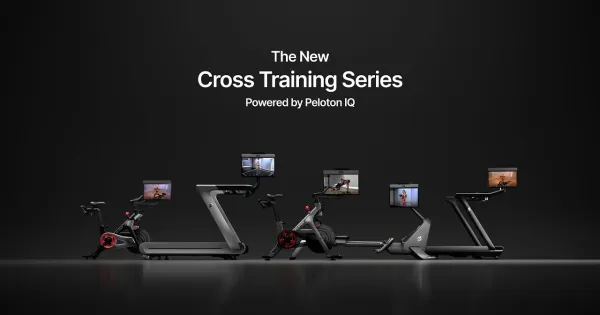Top 6 Strategies to Maximize Your Social Media Marketing

With billions of users worldwide, platforms like Facebook, Instagram, Twitter, LinkedIn, TikTok and others offer immense opportunities for businesses to connect with their target audience, build brand awareness, and drive business growth.
Social media marketing has emerged as a powerful strategy that allows businesses to reach a wider audience, engage with customers, and generate leads.
In this article, we will explore the key strategies and tactics for leveraging social media marketing to drive business growth.
1) Define Your Goals and Target Audience

Before diving into social media marketing, it's crucial to clearly define your goals and identify your target audience. Start by understanding what you want to achieve with your social media efforts. Are you looking to increase brand awareness, drive website traffic, generate leads, or boost sales? Having clear and specific goals will help you tailor your social media strategy and measure your success effectively.
Next, identify your target audience—the specific group of people you want to reach and engage with on social media. Consider demographics such as age, gender, location, interests, and behavior. By understanding your target audience, you can create content and messaging that resonates with them and drives engagement. Conducting market research and analyzing your existing customer base can provide valuable insights into the preferences, needs, and pain points of your target audience.
Once you have defined your goals and identified your target audience, it's time to develop a comprehensive social media strategy. This strategy should outline the platforms you will focus on, the type of content you will create, and the tactics you will employ to reach and engage your target audience. It should also include guidelines on how to maintain a consistent brand voice, respond to customer inquiries and feedback, and measure the effectiveness of your social media efforts. By having a well-defined strategy in place, you can ensure that your social media marketing activities are aligned with your business objectives and are driving meaningful results.
2) Create Compelling Content

Content is king in the world of social media. Developing a content strategy that aligns with your brand identity and resonates with your target audience is crucial for social media success. Start by understanding the interests, preferences, and needs of your target audience. What type of content do they find valuable and engaging? What topics are they interested in? By conducting thorough research and leveraging insights from social media analytics, you can tailor your content to meet the expectations and interests of your audience.
Once you have a clear understanding of your target audience, it's time to create compelling and engaging content. This can include a mix of different formats such as blog articles, videos, infographics, and interactive posts. Focus on providing valuable and informative content that educates, entertains, or solves a problem for your audience. It's important to maintain a consistent brand voice and messaging across your content to build brand recognition and trust.
In addition to creating original content, consider leveraging user-generated content (UGC) as well. UGC can include customer testimonials, reviews, and user-submitted photos or videos. Encouraging your audience to share their experiences and thoughts about your brand can not only enhance your content strategy but also foster a sense of community and engagement. Remember to engage with your audience through comments, messages, and discussions to build meaningful relationships and encourage further engagement with your content.
3) Engage and Interact with Your Audience

Social media is a powerful platform for building relationships and engaging with your audience. It provides a unique opportunity to connect directly with your customers, prospects, and followers on a more personal level. By actively engaging with your audience, you can foster a sense of community, build trust, and strengthen your brand's reputation.
One way to engage with your audience is through timely and authentic communication.
- Respond to comments, messages, and mentions promptly, showing that you value and appreciate their feedback.
- Encourage discussions and ask questions to spark conversations and gather insights from your audience.
- Actively participate in industry-related conversations and share valuable content to position yourself as a thought leader and resource in your niche.
Another effective way to engage with your audience is by creating interactive and interactive content. This can include polls, quizzes, contests, and surveys. Encourage your audience to participate and share their opinions, creating a sense of involvement and ownership. By involving your audience in your content creation process, you not only increase engagement but also gain valuable feedback and insights.
In addition to direct engagement, leverage social media features such as live streaming, stories, and interactive features to create more immersive and interactive experiences for your audience. These features allow you to showcase behind-the-scenes content, host live events, and provide real-time updates, giving your audience a sense of exclusivity and excitement.
4) Leverage Influencer Marketing

Collaborating with influencers in your industry can be a game-changer for your brand's social media marketing efforts. Influencers have established a loyal following and are seen as trusted authorities in their respective niches. By partnering with influencers, you can tap into their existing audience and leverage their influence to promote your brand, products, or services.
When selecting influencers to collaborate with, it's essential to consider relevance and alignment. Look for influencers whose values, audience demographics, and content align with your brand. This ensures that the partnership feels authentic and resonates with both the influencer's audience and your target market. By partnering with influencers who have a genuine interest in your brand, you can tap into their existing trust and credibility, which can positively impact your brand's reputation.
Influencer collaborations offer various opportunities to showcase your brand. This can include sponsored posts, product reviews, giveaways, guest blog posts, or even influencer takeovers. Each collaboration presents a unique way to introduce your brand to a wider audience, drive engagement, and generate brand awareness. Furthermore, influencer collaborations can provide valuable user-generated content and social proof, as influencers share their experiences and endorse your brand.
It's important to establish clear objectives and metrics for your influencer collaborations to measure their effectiveness. Whether it's increasing brand awareness, driving website traffic, or generating sales, defining your goals helps guide the partnership and evaluate its success. By tracking key metrics such as reach, engagement, and conversions, you can assess the impact of influencer collaborations on your overall marketing efforts and make data-driven decisions for future collaborations.
5) Utilize Paid Advertising

While organic reach on social media is valuable, it can be limited due to algorithm changes and the sheer volume of content being shared. This is where paid advertising comes into play. By investing in social media advertising, you can extend your reach, target specific audience segments, and amplify the impact of your social media marketing efforts.
Paid social media platforms like Facebook Ads, Instagram Ads, LinkedIn Ads, and TikTok Ads offers a range of targeting options, allowing you to refine your audience based on demographics, interests, behaviors, and location. This precision targeting ensures that your ads are shown to the most relevant and receptive audience, increasing the likelihood of engagement and conversions.
Additionally, social media platforms provide robust analytics and reporting tools that allow you to track the performance of your paid ads and make data-driven optimizations.
One of the key advantages of paid social media advertising is the ability to set and control your budget. You can start with a small budget and gradually increase it as you see positive results. This flexibility allows businesses of all sizes to leverage paid advertising and compete on a level playing field. With the ability to track and measure your return on investment (ROI), you can assess the effectiveness of your paid campaigns and make informed decisions to optimize your ad spend.
It's important to design compelling and visually appealing ad creatives that grab the attention of your target audience. Clear and compelling messaging, captivating visuals, and strong calls-to-action can drive engagement and encourage users to take the desired action, whether it's visiting your website, making a purchase, or signing up for a newsletter. By combining paid advertising with strategic targeting and impactful ad creative, you can maximize the reach and impact of your social media marketing efforts.
6) Track and Analyze Your Results

To optimize your social media marketing efforts, tracking and analyzing your results is crucial. Use analytics tools provided by social media platforms or third-party tools like HootSuite or Sprout Social to measure the performance of your campaigns. By monitoring key metrics, you can gain valuable insights into what's working and what needs improvement.
There are various metrics to consider when evaluating your social media performance. These include reach, engagement, click-through rates, conversion rates, and follower growth. Tracking these metrics allows you to understand the impact of your social media activities and make data-driven decisions to improve your strategy.
In addition to monitoring metrics, it's important to listen to your audience and gather feedback. Social media provides a platform for direct communication with your customers and followers. Pay attention to their comments, messages, and mentions, and use this feedback to refine your content, address concerns, and provide better customer experiences.
Regularly reviewing and analyzing your social media performance enables you to identify trends, spot opportunities, and make strategic adjustments. You can identify the types of content that resonate most with your audience, determine the optimal posting frequency and timing, and identify opportunities for engagement and growth. This data-driven approach helps you refine your social media strategy, maximize your reach and impact, and drive meaningful results for your business.
Final Thoughts
Social media marketing presents a vast array of opportunities for businesses to drive growth and expand their reach.
By defining clear goals, creating engaging content, building relationships, leveraging influencers, utilizing paid advertising, and analyzing results, businesses can harness the power of social media marketing to achieve their business objectives and thrive in the digital landscape.
Remember, social media marketing is an ever-evolving field, so it's crucial to stay updated with the latest trends, algorithms, and best practices. By continuously adapting and optimizing your social media strategy, you can unlock the full potential of social media marketing and drive sustainable business growth.





